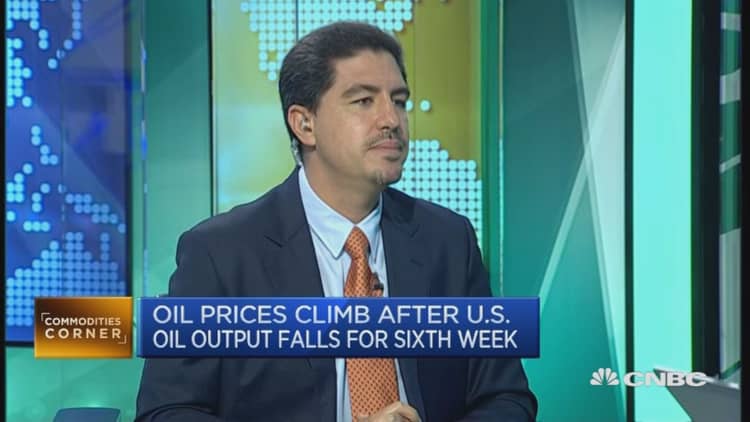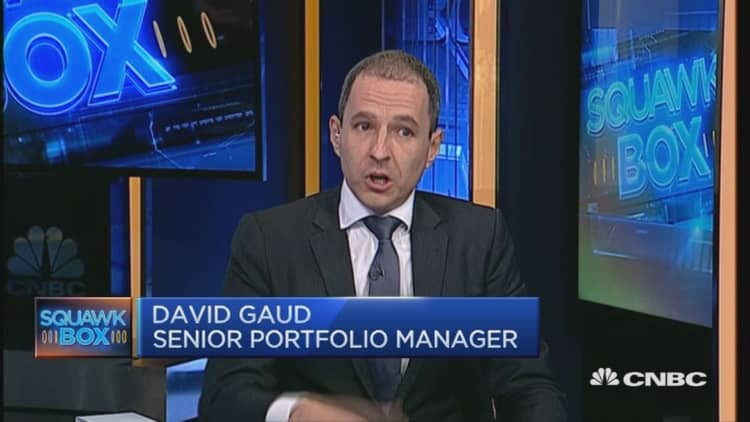U.S. oil prices rallied again on Friday after a one-day pause, helped by strong U.S. jobs data and technical buying after crude prices breached resistance levels on charts.
Also on Friday, the U.S. oil rig count fell by 8 to a total of 392, oilfield services firm Baker Hughes reported. At this time last year, drillers were operating 922 rigs in U.S. oil fields.
Brent futures rose $1.63 to $38.70 a barrel, while U.S. crude futures settled at $35.92 a barrel, up $1.35, or 3.91 percent for the session. U.S. oil also posted a 9.5 percent weekly gain.



Oil prices were mixed on Thursday after rallying for the first three days of the week.
U.S. jobs growth surged in February, the Labor Department reported, the clearest sign yet of employment market strength.
"We've had another good week, the market has been toying with resistance around the $37.50 area in Brent. We had a break above but it failed to hold — to me it indicates we could be in a Friday afternoon profit mode," Saxo Bank's head of commodities research Ole Hansen said.
"The psychology seems to have turned in the market and although we may see some profit-taking into the weekend, we potentially could still be moving higher next week."
U.S. crude breached the $35 per barrel level earlier this week, but a settlement above that price would set up markets for another move higher, Again Capital founding partner John Kilduff told CNBC.
"It's a technical trade here," he said. "Employment data was strong, and that speaks to strong gasoline demand we've been seeing."
Charts for Brent and WTI showed Relative Strength Index (RSI) at above 60, heading toward the overbought level of 70. RSI levels spiked as crude prices jumped more than 35 percent from 12-year lows hit less than 2 months ago.
Cuts in U.S. oil production have provided price support after the U.S. Energy Information Administration reported output fell for a sixth straight week to 9.08 million barrels a day, while U.S. crude inventories rose to a new record of 517.98 million barrels last week.
The combination of expected further cuts in U.S. output in coming months and a brightening demand outlook is also underpinning prices.
"Most support comes from the supply side but also the demand side seems to improve," Commerzbank analyst Carsten Fritsch said, pointing to Saudi Arabia raising its April selling prices for Asian customers and potential for Chinese oil demand to surprise to the upside.
Meetings between oil producers are expected to take place in March to discuss potential coordinated action although no decision on the date or venue of possible talks between OPEC and non-OPEC producers has been made yet.40 by the middle of this year.
— CNBC's Tom DiChristopher, Patti Domm, and Jeff Cox contributed to this story.


